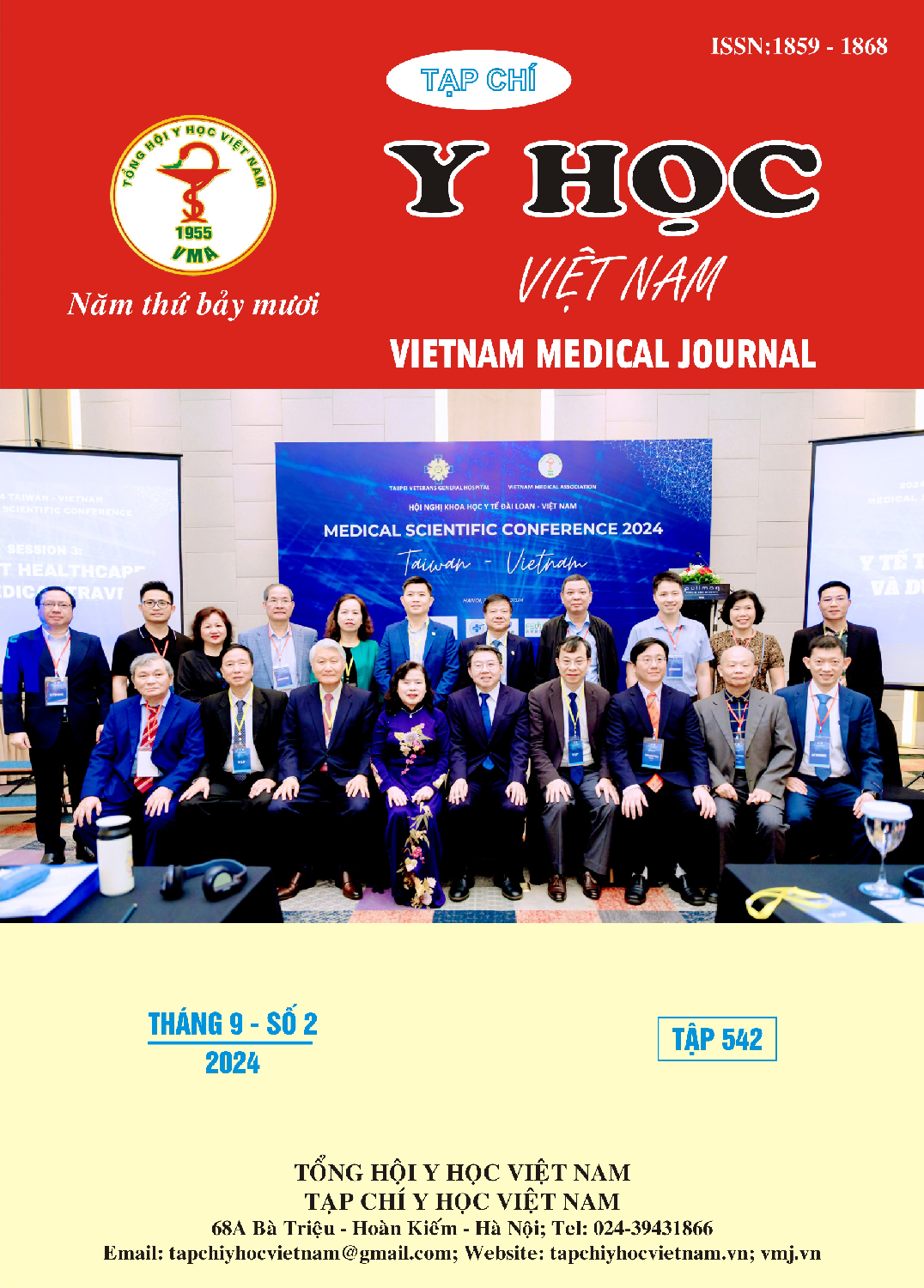ANALYSIS OF 6 TEARDROP C2 FRACTURE CASES: A LITERATURE REVIEW
Main Article Content
Abstract
Objective: This study aims to present a case series of C2 teardrop fractures treated at the Spine Surgery Department of Viet Duc University Hospital, while also conducting a comprehensive review of the existing literature concerning treatment approaches for this specific type of injury. Methods: Over the period from January 2022 to June 2023, six patients (comprising 5 males and 1 female) with confirmed diagnoses of C2 teardrop fractures were managed at the Spine Surgery Department of Viet Duc University Hospital. The study conducted an in-depth descriptive analysis of this case series, encompassing clinical attributes, diagnostic imaging, and the assessment of therapeutic outcomes for these patients. The average follow-up duration after treatment was 4.83 ± 1.70 months. Results: Among the cohort of six subjects under investigation, four patients received conservative treatment utilizing a rigid cervical collar, while two patients underwent surgical intervention involving posterior cervical spine fixation. Prior to treatment initiation, neurological symptoms were absent in five patients, whereas one patient exhibited ASIA (C) neurological injury indicators. Subsequent to treatment, the patient initially displaying ASIA (C) symptoms demonstrated an improved status at ASIA (D), and the remaining patients did not exhibit any neurological impairment. The average Visual Analog Scale (VAS) score, was 4.17 ± 0.47 prior to treatment and decreased to 1.17 ± 0.17 after the intervention. Notably, no complications were observed. The post-treatment rate of successful bone fusion reached 100%. In the subgroup subjected to surgical intervention, one patient showcased neurological symptoms (ASIA C) in conjunction with a concomitant injury (spinal contusion, rupture of the C4-5 supraspinous ligament). The average alvusion ratio within this subgroup was 39.43 ± 1.86%, with an average displacement of 8.82 ± 1.29 mm. On the other hand, the conservatively treated group, comprising 4 cases of isolated C2 teardrop injuries, presented no neurological symptoms. The average alvusion ratio for this group was 36.25 ± 0.70%, with an average displacement of 4.49 ± 0.12 mm. Conclusion: The majority of isolated C2 teardrop fractures exhibit stability, devoid of neurological manifestations, thereby supporting a conservative management approach. Surgical intervention is warranted when indications of instability are evident (e.g., substantial fragment size, pronounced displacement, intricate discoligamentous injuries), or when clinical signs of neurological impairment are apparent
Article Details
Keywords
Teardrop, Spinal Fracture, C2 fracture
References
2. Burke JT, Harris JH. Acute injuries of the axis vertebra. Skeletal Radiol. 1989;18(5):335-346. doi:10.1007/BF00361422
3. Watanabe M, Sakai D, Yamamoto Y, Sato M, Mochida J. Clinical features of the extension teardrop fracture of the axis: review of 13 cases: Clinical article. J Neurosurg Spine. 2011;14(6): 710-714. doi:10.3171/2011.1.SPINE10687
4. Hu Y, Kepler CK, Albert TJ, et al. Conservative and Operative Treatment in Extension Teardrop Fractures of the Axis. Clin Spine Surg Spine Publ. 2016; 29(1): E49-E54. doi: 10.1097/BSD. 0b013e31828984f9
5. Wang H, Chen G, Liu Y, Li X, Jiang W. Anterior C2–3 fusion with internal fixation for unstable teardrop fracture of the axis: a retrospective cohort study. Ann Transl Med. 2022; 10(18): 1004-1004. doi:10.21037/atm-22-4020
6. Kim SK, Rhee JM, Park ET, Seo HY. Analysis of Nonunion in Conservatively Managed Anterior Tear Drop Fractures of C2 Vertebra. J Clin Med. 2021;10(9):2037. doi:10.3390/jcm10092037
7. Kim S, Rhee JM, Park ET, Seo H. Surgical Outcomes for C2 Tear Drop Fractures: Clinical Relevance to Hangman’s Fracture and C2‐3 Discoligamentous Injury. Orthop Surg. 2021;13(8):2363-2372. doi:10.1111/os.13163


